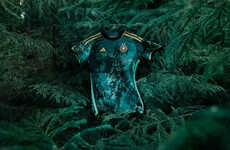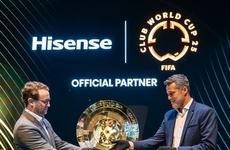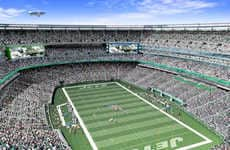
Greg Ponesse — May 29, 2006 — Lifestyle
References: web-japan.org
When the opening match of the 2006 FIFA World Cup gets underway in Germany, Japanese technology will help fans enjoy the action on the pitch. The Allianz Arena, where the tournament's first game is scheduled to take place, is constructed from panels containing a fluoropolymer film called ETFE foil, which was developed and manufactured by Asahi Glass Co., Ltd. The panels form the stadium's walls and roof. A major advantage of Asahi Glass's foil is that it allows light to pass through it. This is crucial for the stadium's natural grass, which needs sunlight to grow. The other advantage is the foil's lightness and flexibility, making it easy to install in the smoothly curved panels.
Trend Themes
1. Stadium Architecture with ETFE Foil - Using ETFE foil as an alternative to traditional stadium construction, providing an opportunity for cost-effective, natural-light-filled and sustainable stadium architectures.
2. Innovative Building Material Technologies - Development of more advanced and eco-friendly building materials that improve the aesthetics, sustainability, and functionality of stadiums.
3. Natural Light in Sports Venues - Increasing demand for sustainability and ensuring adequate sunlight for natural grass in sports venues is driving the trend towards transparent stadium architecture.
Industry Implications
1. Construction - Asahi Glass's ETFE foil's unique properties provide opportunities for the construction industry to explore more sustainable and cost-effective materials and designs.
2. Sports and Entertainment - Growing demand for eco-friendly, innovative, and functional stadium designs is making architects and construction companies look for new materials and technologies.
3. Green Technology - The trend towards sustainability and eco-friendliness is driving the development of advanced materials and technologies that can support green building practices and promote environmental awareness.
3.6
Score
Popularity
Activity
Freshness























